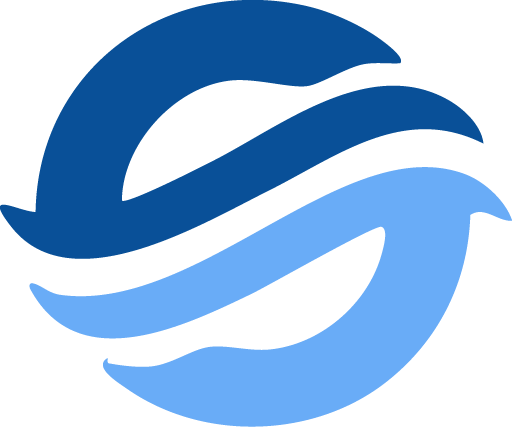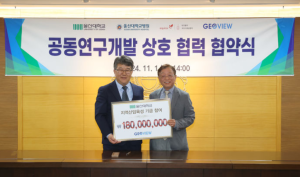Electric Times, reporter Yang Jin-young (camp@electimes.com) posted on April 27, 2023, at 16:10
- First in Korea to apply ‘Dynamic Positioning’… Continuous exploration for up to 15 days
- Boasting the highest accuracy… High interest in the wind power industry
- Marine exploration is crucial for properly establishing offshore wind power generation.
On the morning of the 25th, amidst light drizzle, the “Geoview DP-1” set sail from Busan Port’s Dock 1.
While it might seem like just the departure of a single vessel, the presence of representatives from major wind power-related companies such as Ørsted, COP, Equinor, Northland Power, LS Cable, Bada Energy, Korea Southern Power, and KT Submarine highlighted the significance of the DP-1’s launch. After boarding, I was able to see all the marine survey technologies that the DP-1 boasts in the survey room on the right.
If I had to sum up the function of the Geoview DP-1 in one word, it would be “accuracy.”
The survey equipment on the DP-1 includes: ▲ Multi-Beam Echo Sounder (MBES) ▲ Sonar (Sound Navigation and Ranging) ▲ High-frequency Sub-bottom Profiler ▲ Low-frequency Sub-bottom Profiler.
Geoview proudly claims that the DP-1 is equipped with the best survey equipment in Korea, though the survey room itself is not very large, measuring just about 3 meters by 3 meters. This is due to the recent development of smaller, more compact equipment.
The DP-1 is equipped with the “hull-mounted” Multi-Beam Echo Sounder, which is known to be the most accurate among the various types of multi-beam systems. This equipment, developed to survey seafloor topography, sediment distribution, and underwater objects, can reach depths of up to 3,600 meters.
The sonar uses a slightly higher frequency than the multi-beam echo sounder to provide images of the seabed. Unlike single-frequency sonar systems, it uses dual frequencies of 100kHz and 400kHz, complementing each other for enhanced accuracy.
A Geoview representative explained, “Even with the multi-beam sonar, there can be small gaps between beams. In those areas, we might miss obstacles like construction debris or underwater pipelines. But because the sonar ‘captures’ images like a camera, it can detect even small obstacles.”

Behind the sonar is a magnetometer, a type of magnetometer, which is mounted to check for areas with abnormal magnetic fields. This is done by utilizing the geomagnetic conditions in Korea’s waters, where areas with abnormal magnetic fields are suspected to contain underwater obstacles, according to Geoview.
The DP-1 is also equipped with both a high-frequency and low-frequency sub-bottom profiler.
The high-frequency sub-bottom profiler can survey up to 6,000 meters, although its penetration depth varies depending on the seabed material (sand, mud, etc.). While the high-frequency sub-bottom profiler has lower penetration, it offers better resolution, whereas the low-frequency sub-bottom profiler offers the opposite.
The DP-1’s multi-beam echo sounder, sonar, and high-frequency and low-frequency sub-bottom profilers each survey using different methods and complement each other to produce the final results.
A Geoview representative explained, “In simple terms, we’re doing everything that can be done in marine surveys. Geoview’s equipment is the most expensive in Korea, offering high resolution, and especially the high-frequency sub-bottom profiler, the Deep 36, is the first of its kind brought into the country by us.”
Passing through the survey room, I climbed a narrow, steep staircase to arrive at the control room.
On the opposite side of the usual helm where the captain would normally be in charge, is the pride of the DP-1.
It’s the space where Dynamic Positioning (DP) is performed, after which the vessel is named.

Dynamic Positioning refers to a control system that uses its own propellers and thrusters to automatically maintain a ship’s position and direction.
A Geoview representative stated, “Maintaining a precise position during marine surveys is crucial, and the DP system, which is not found on other ships, makes this possible.” They also added, “With this system, we can accurately maintain survey lines during investigations.”
The DP-1, which can carry up to 30 people, is operated by a crew consisting of 12 to 16 surveyors and other personnel who handle the ship’s operations.
The goal is to conduct investigations for up to 15 days straight, 24 hours a day, on a single trip. Although longer surveys are possible, the established limit is 15 days due to supply constraints related to corrosion.
The reason for conducting continuous surveys over the course of 15 days is to minimize errors.
A Geoview representative explained, “If we go out for a survey in March and return in May, the results may differ.” They added, “Even with the most accurate survey, the sea’s level changes over time.”
Spring and fall are considered the best seasons for marine exploration in Korea’s waters. This is because the temperature difference between day and night underwater is smallest during these seasons, allowing for more precise investigations.
“Most marine survey equipment uses sound waves,” the Geoview representative said. “Sound waves are most affected by the speed of sound, and temperature has the greatest impact on the speed of sound,” they explained.
Source: Electric Times (https://www.electimes.com)



